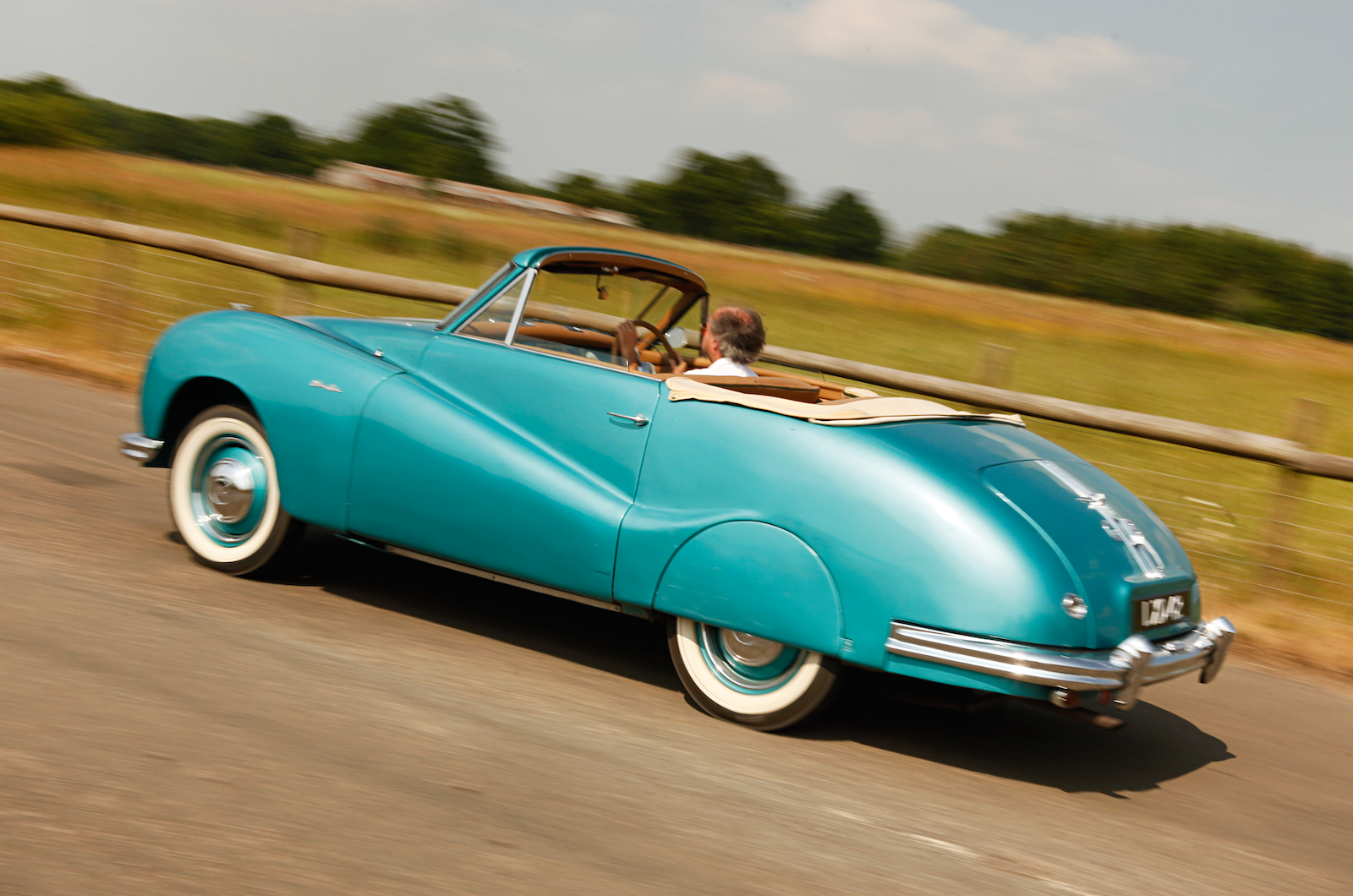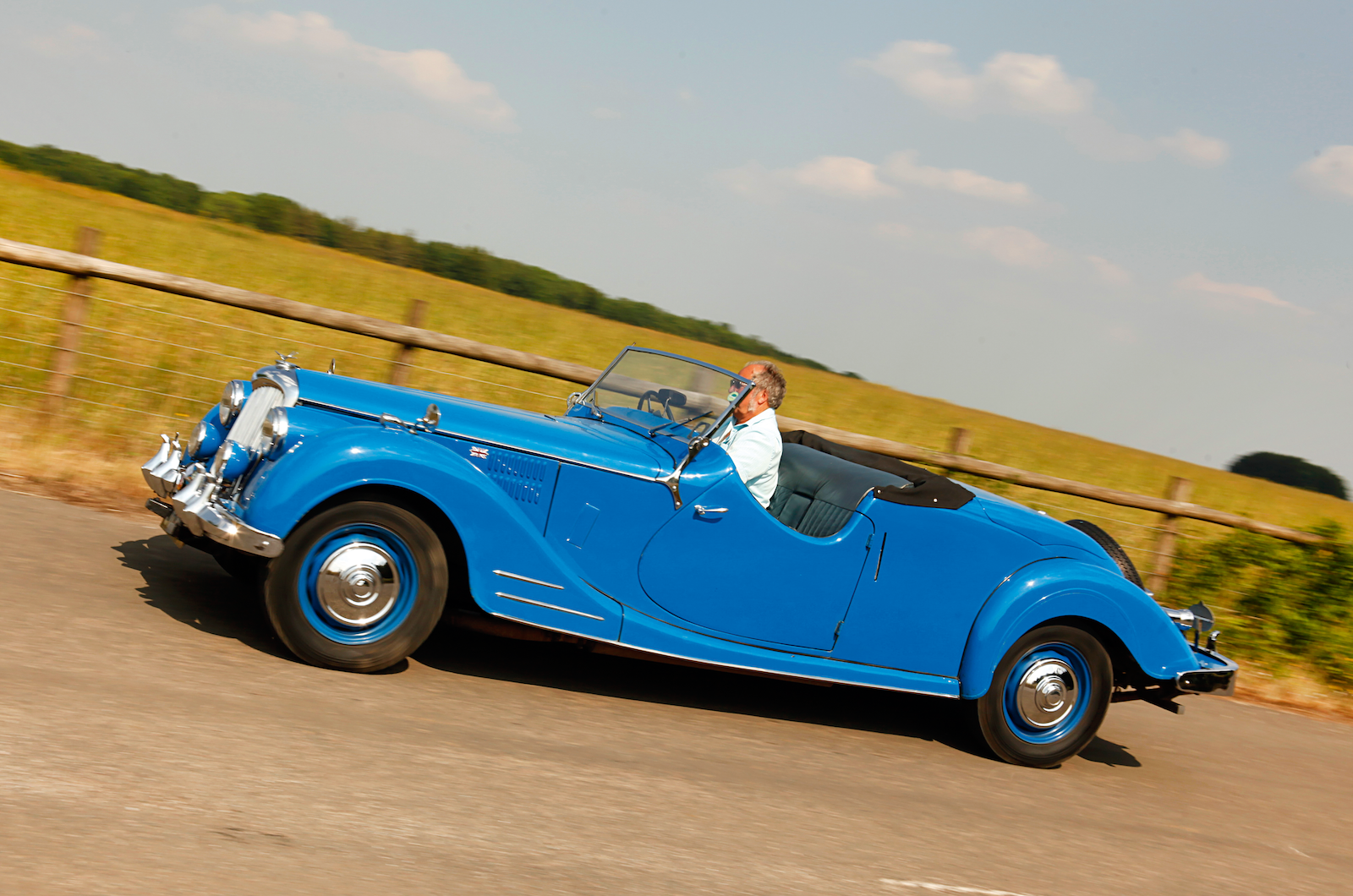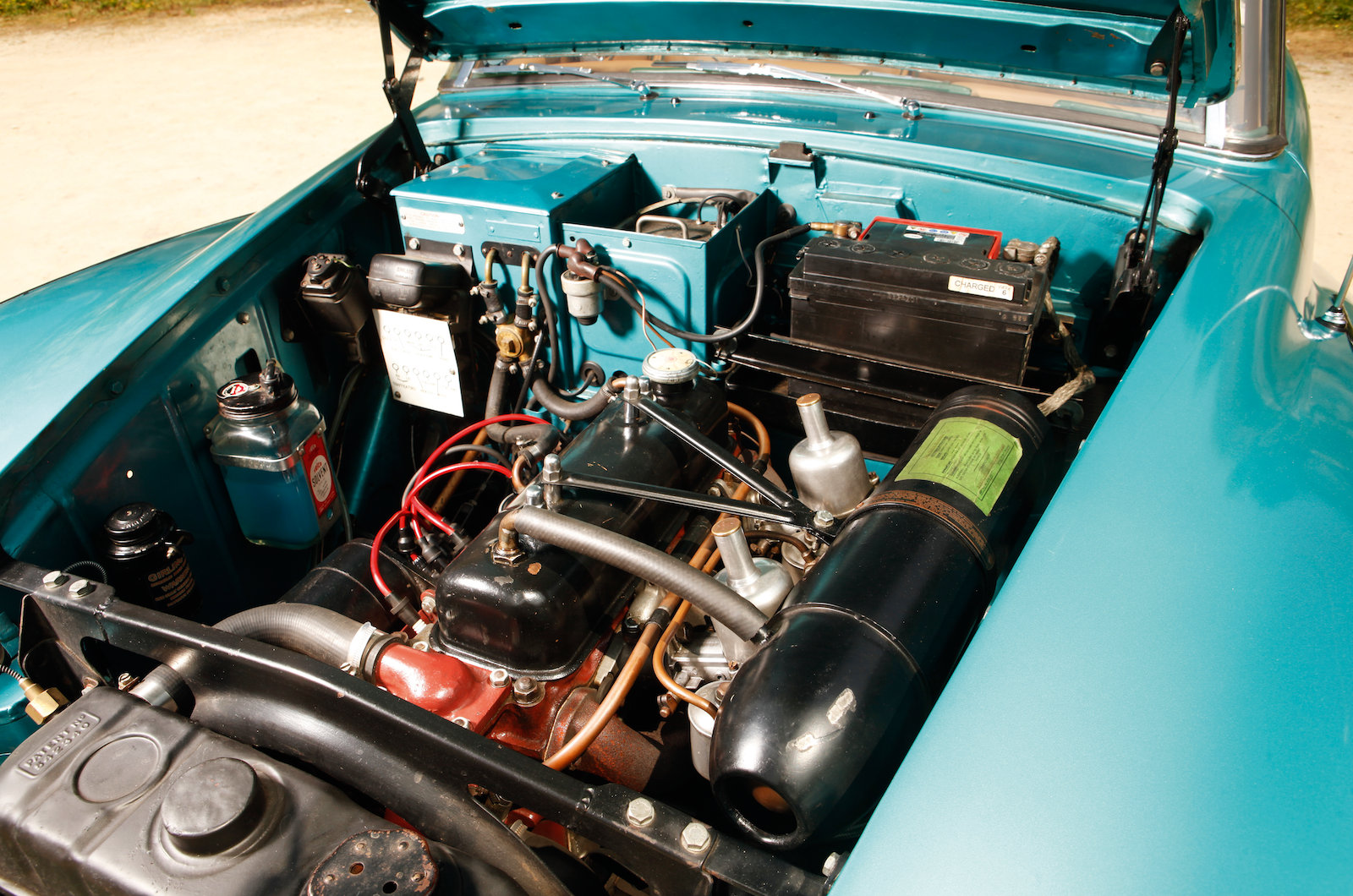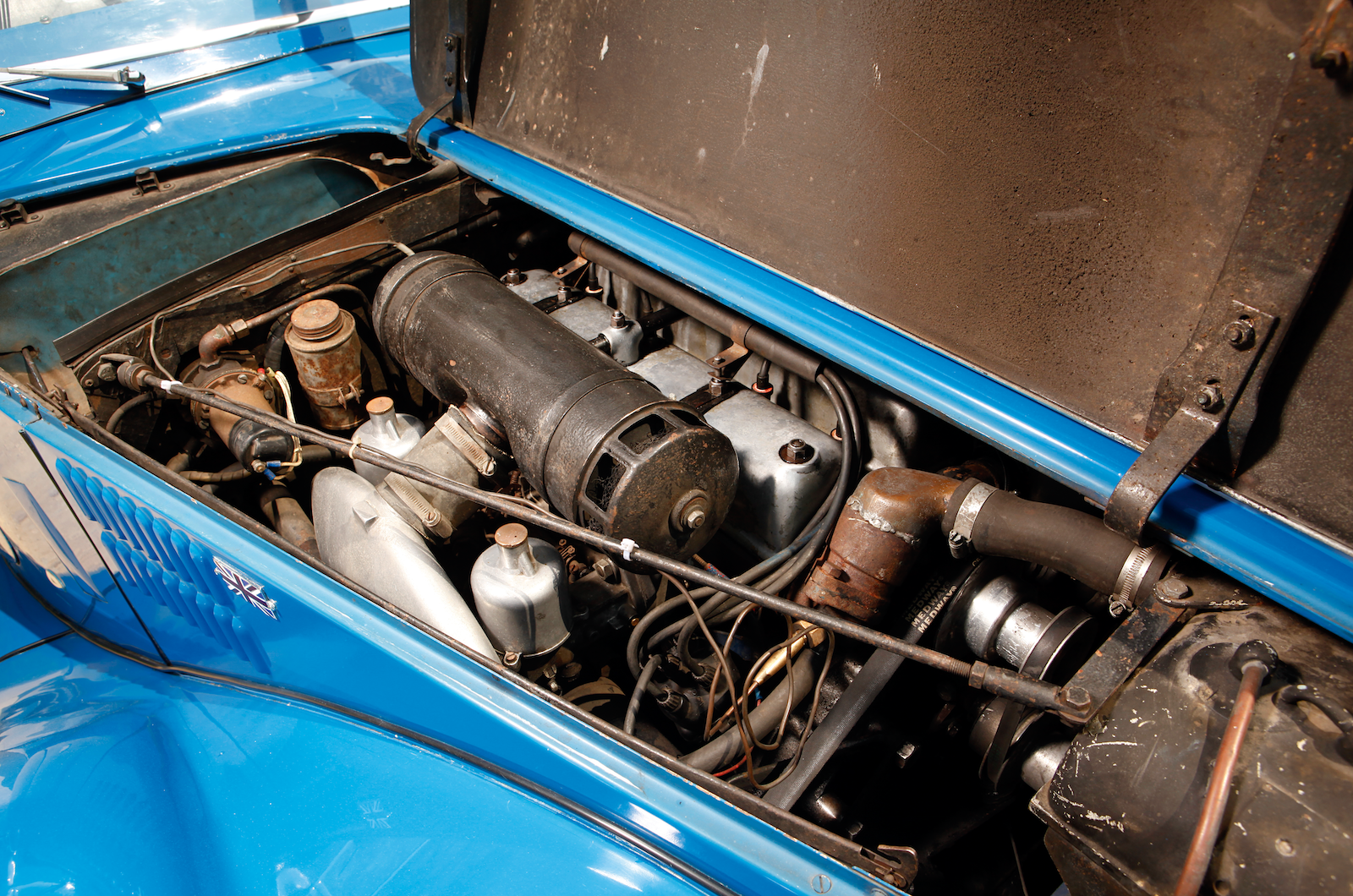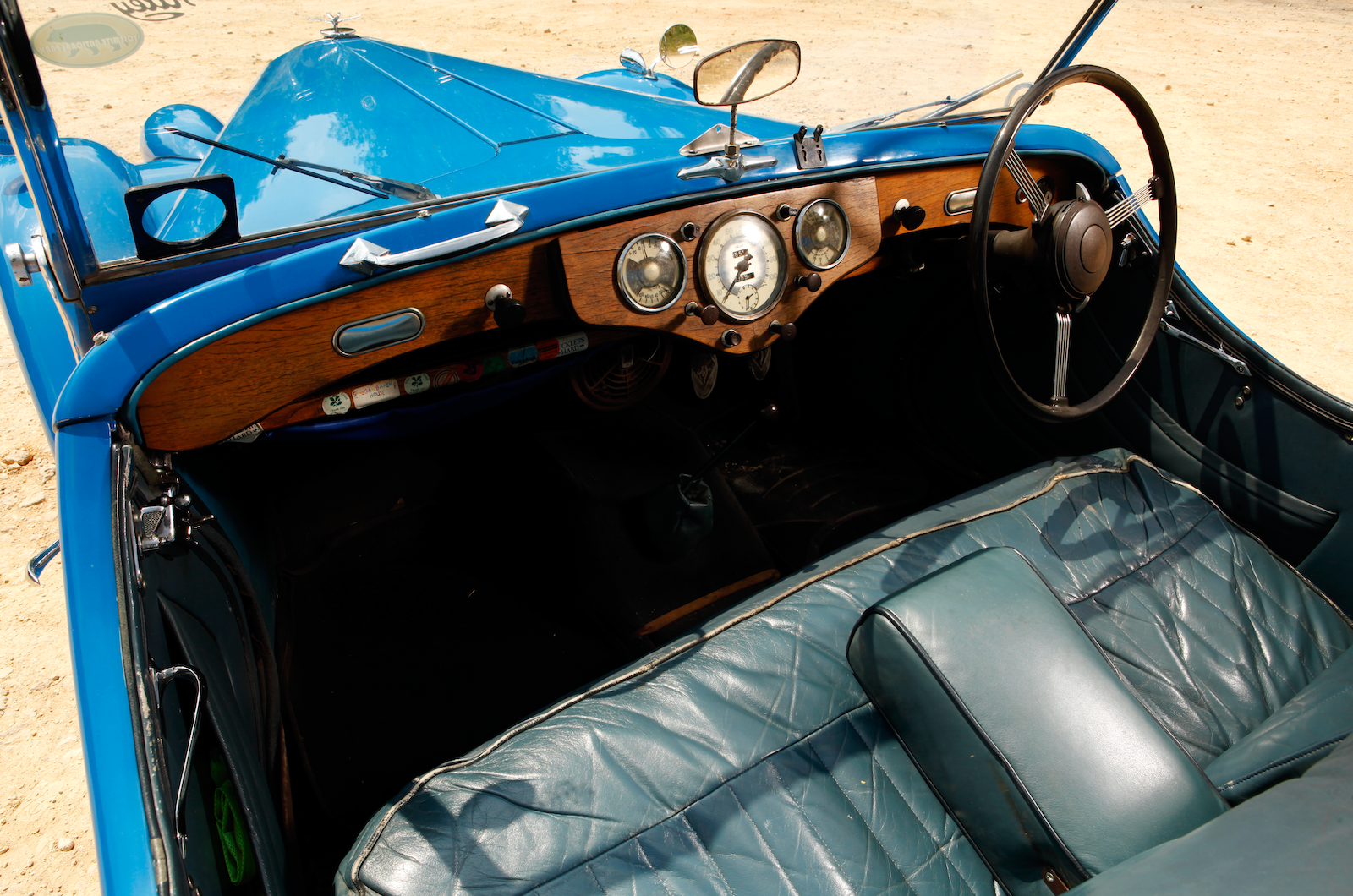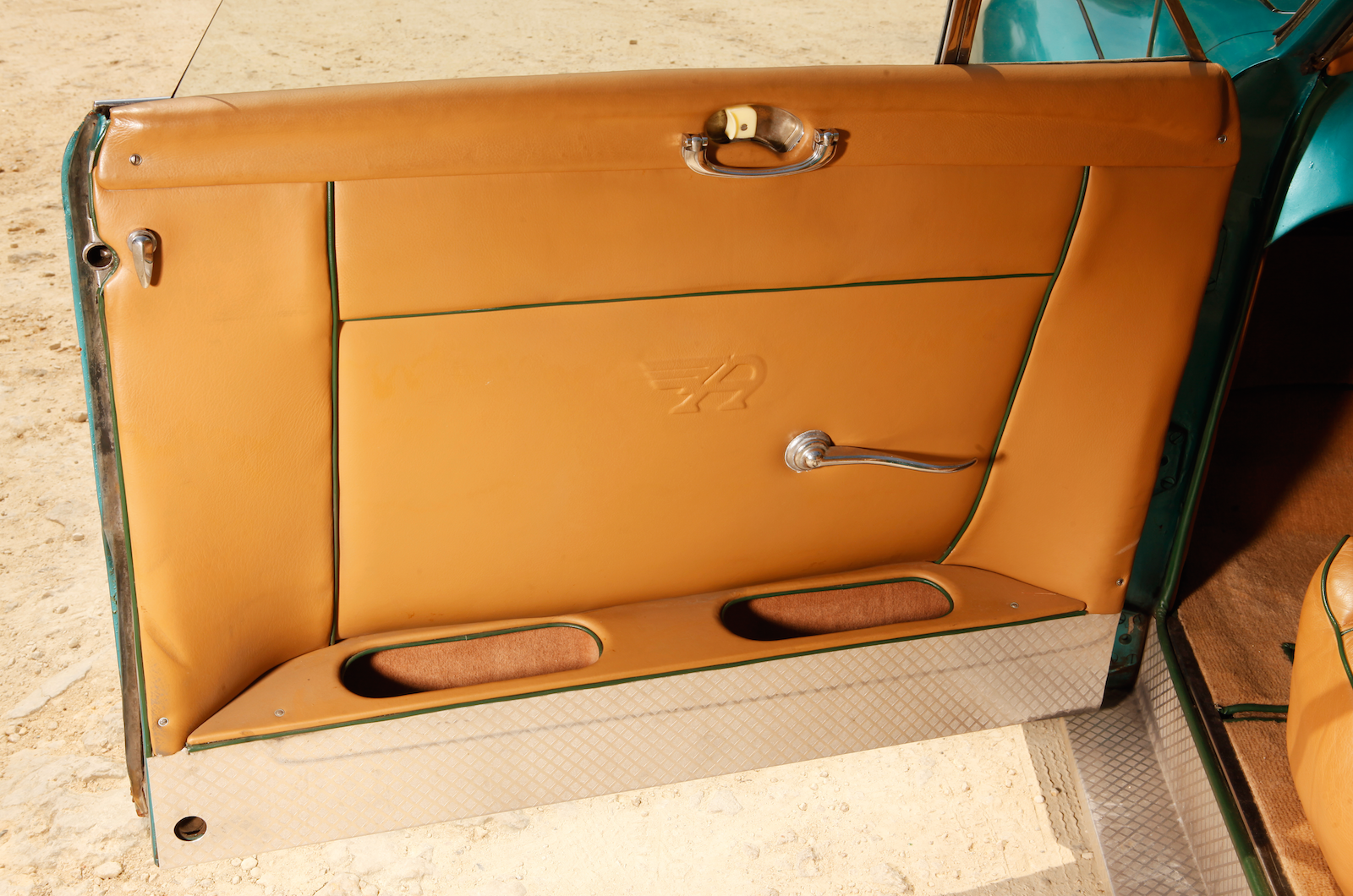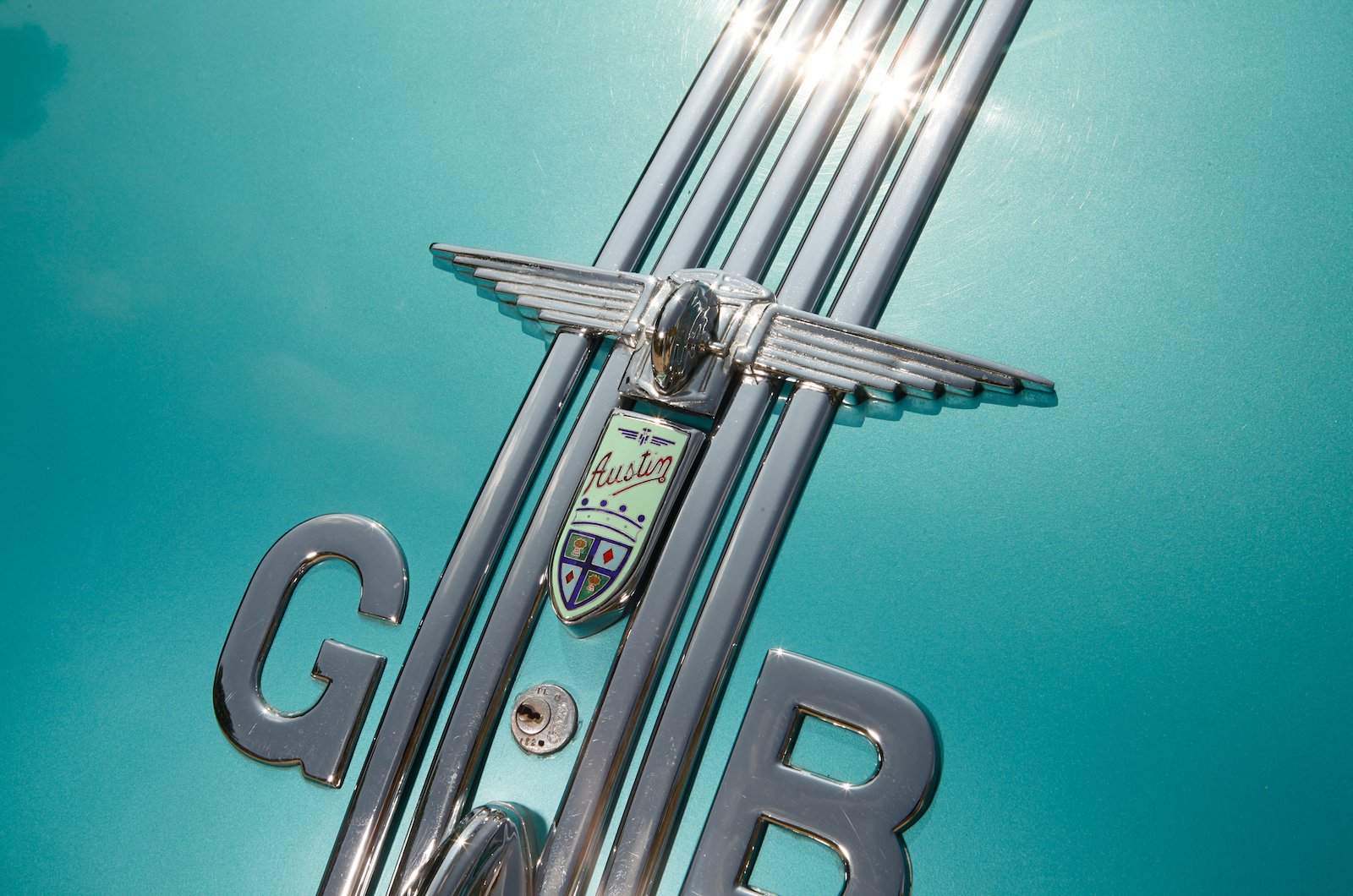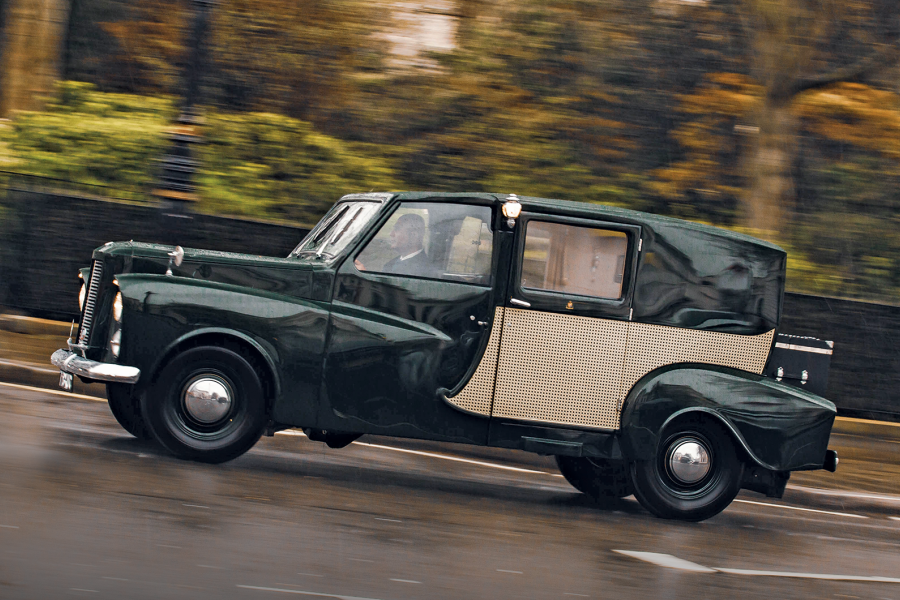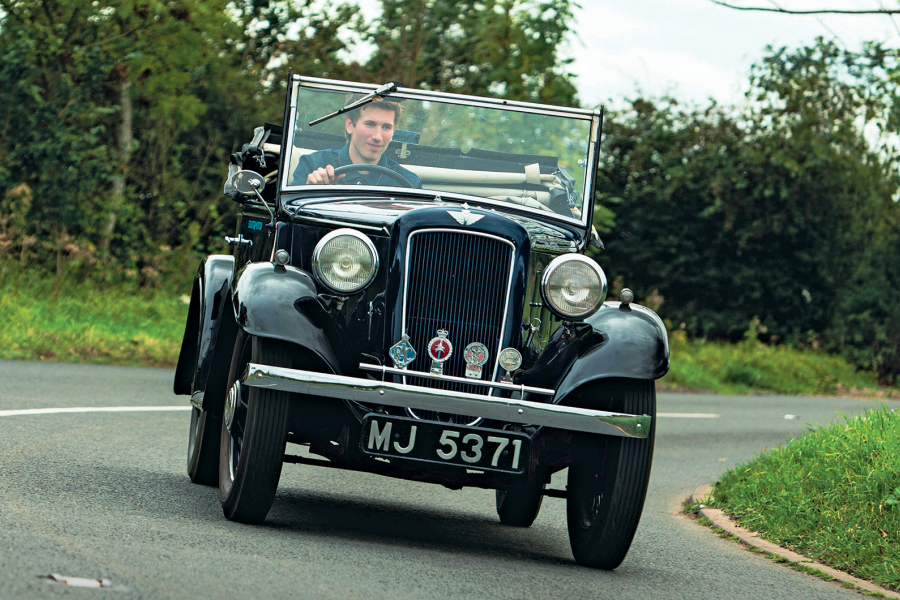Another mod has been a reversion to manual windows and top. Thanks to one-shot window levers and a delightfully easy integral hood – folding neatly into a well – this is hardly a retrograde move.
The cockpit is suitably plush – after all, the Atlantic cost £825 in 1950, or 25% more than the £659 asked for a sliding-head Hampshire.
It may not be trad, but the leather-covered dash has a full set of gold dials with stylised black lettering, and gold detailing extends to the adjustable steering column and the handle of the umbrella handbrake.
There’s also a matching top-of-the-range Ecko CR61 radio.
Details include the Austin ‘A’ embossed into the leather door trims, and twin pockets set into the thick doors.
Subtle Blue Diamond on this classic Riley’s rear bumper
The deep sills and the triangular brace at the rear of the door aperture hint at a need to reinforce the structure, as does the extra peg to help lock the door in place.
But the car is not spacious, mainly thanks to the folding roof: in the rear even short passengers have to splay their legs.
Perched high on the split front bench, driving the Atlantic is a relaxing experience, thanks to the easy torque (144lb ft at 2500rpm) of the long-stroke ‘four’ – later, of course, to be used in the Austin-Healey 100.
Indeed, you can dispense with first, which was blocked off on the Healey.
“No one uses first gear,” says Yeomans. “You have to be ever so gentle or you’ll damage the laygear or break a halfshaft. There are only one or two occasions when I’ve used first gear – it has to be a hell of a hill.”
Pulling away in second, you find you can trickle round corners in third and then accelerate away strongly.
This classic Austin A90's beautifully ornate badging
Progress is aided by a clunky but clean column change. With a top speed of over 90mph, cruising in fourth at 60-70mph is unflustered, the gearing being equivalent to 22mph per 1000rpm.
From the robust engine note you know all the same that there aren’t six cylinders under that ornamented bonnet, although the unit never becomes harsh.
The Atlantic holds course well, the steering having only minimal lost motion at the straight-ahead, for which one automatically compensates.
Cornered exuberantly, the Austin does lean and squeal its crossplies, but roll is checked a little by the uprated dampers Yeomans has fitted.
There’s an underlying softness to the suspension, as you might imagine, and the Austin becomes turbulent on rough surfaces, with a bit of bobbing from the front – albeit nothing that would alarm the driver of a late-’40s American convertible.
The brakes need a shove, but work adequately.
The bonnet and bootlid of both of these cars are alloy; the Riley has a flat ’screen, while the centre pane of the Austin’s has a gentle curve – the prototype had a two-piece split item
Pete Harrison’s Riley might be more conventional, though it is no less striking, thanks to that long trailing tail.
It looks as if it should accommodate a dickey seat, but in fact the boot holds nothing but a generous amount of luggage and a huge twin-filler 20-gallon tank – up from the 12½-gallon item of a regular 2½-litre.
Unsurprisingly, it seems that the factory converted a handful of cars to four-seat tourer configuration.
The driving compartment is poles apart from the flashiness of the Austin, with a simple plain-grain wood dash housing three round dials.
The Riley feels like a sports car: in its open cockpit, sitting close to the wheel and quite high, you are more exposed to the elements.
You find there’s a firm action to the pedals – matched to beefily effective braking – and a loose, long throw to the Riley’s floor gearchange, which is a latter-day conversion from the factory column shift.
The Ecko CR61 radio of the Austin A90 Atlantic was a factory option
With a decisive action plus a declutch and pause in neutral, every change goes through smoothly, up or down. You need to concentrate, but it’s fine.
With an output of 100bhp and 134lb ft of torque at 3000rpm, the Riley is crisper and less lazy than the Austin but also less refined, an impression underlined by the flatulent exhaust. It pulls strongly in third, cruises at similar speeds to the Austin in top, yet scores with greater poise.
There’s none of the Atlantic’s roll, and the steering, hefty on lock, is deliciously accurate on the move, despite the lower gearing imparted by the transfer box.
The Riley can ride abruptly, but this is more as a consequence of the suspension’s well-controlled firmness. Refreshingly, the timber-framed structure is nicely rigid, a testimony to the care with which Harrison glued and screwed everything when he rebuilt the body.
In essence, the Riley feels more old-fashioned than the Atlantic – a bit home-made, even. A perfectly enjoyable car, it is rougher, rortier, and demands more application to drive.
The Austin, in contrast, is a big old softie – blunt in its engineering but strangely endearing.
It only takes five minutes to see that both cars were no-hopers in their time, but today either one is likely to put a smile on your face; it just depends how you like your motoring.
Images: Tony Baker
Thanks to The Riley RM Club and Austin Counties CC
This was originally in our October 2013 magazine; all information was correct at the date of original publication
READ MORE
Quality street: Riley One-Point-Five vs Lancia Appia
Cross-channel clash: Renault 16 vs Austin Maxi
Shifting sands: MG VA vs Riley 12/4
Jon Pressnell
Jon Pressnell is a contributor to Classic & Sports Car

